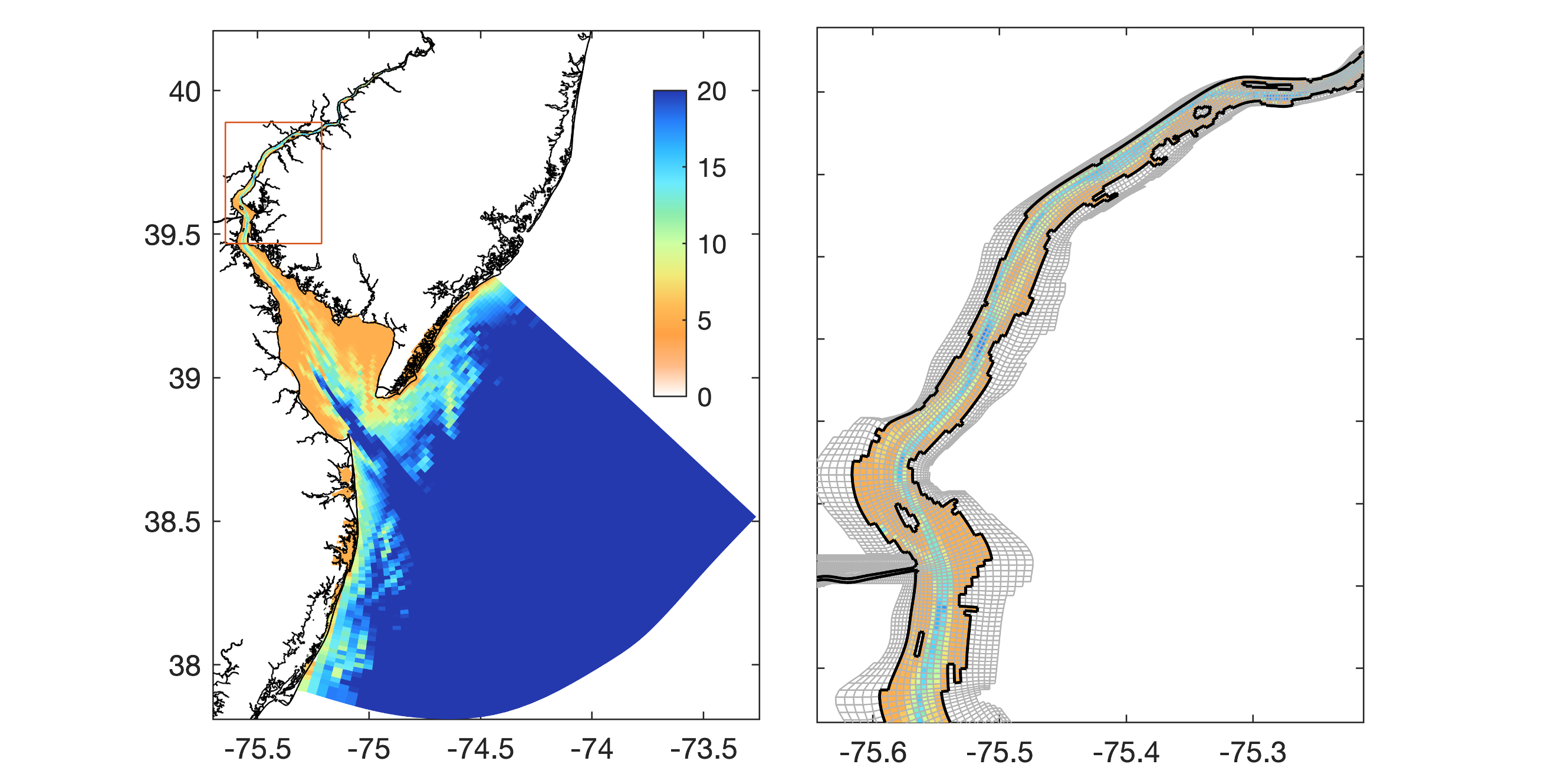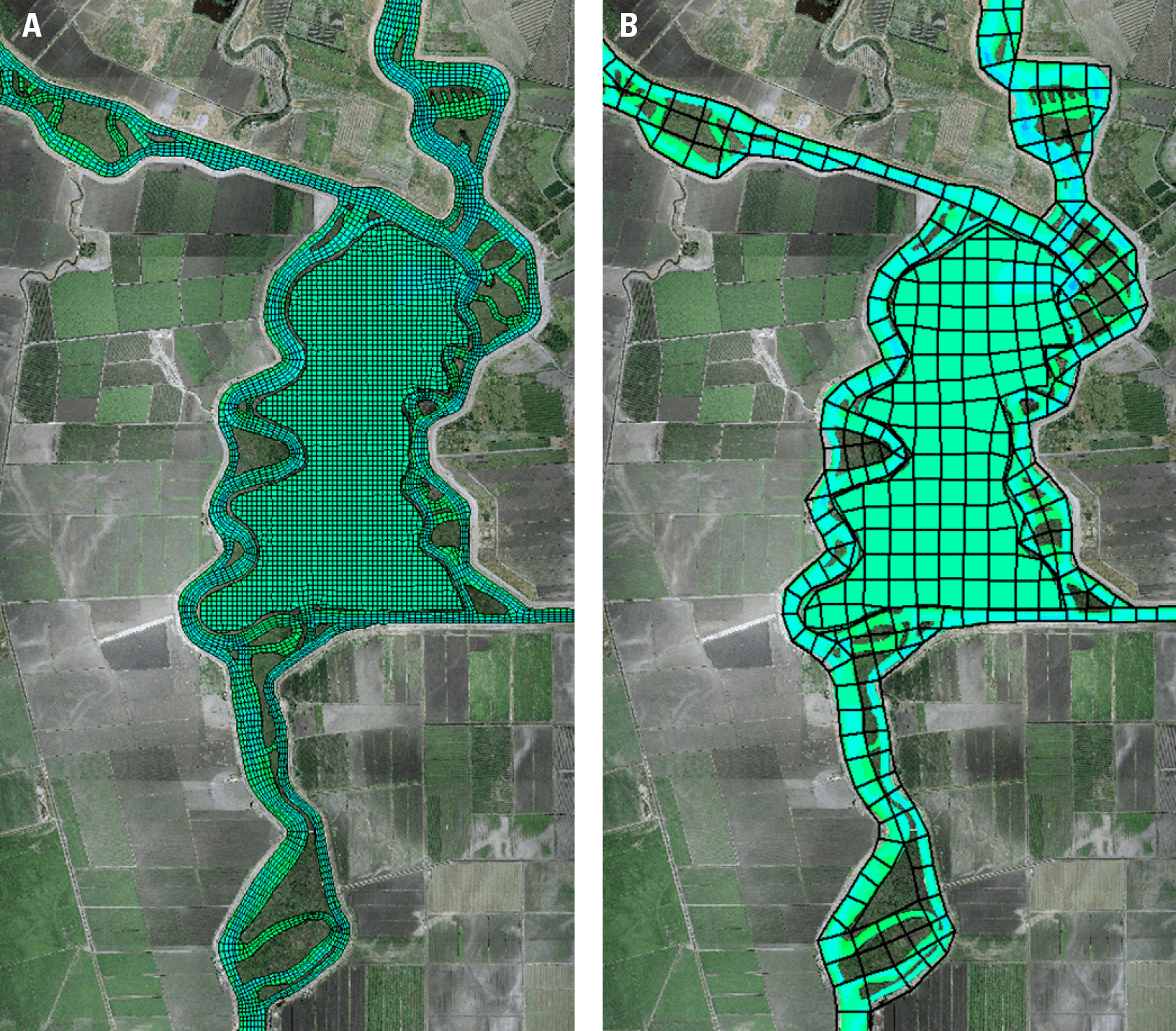References

Benway, H., Lorenzoni, L., White, A., Fiedler, B., Levine, N., Nicholson, D., and DeGrandpre, M., Sosik, H., Church, M., O’Brien, T., Leinen, M., Weller, R., Karl, D., Henson, S., Letelier, R. (2019). Ocean Time Series Observations of Changing Marine Ecosystems: An Era of Integration, Synthesis, and Societal Applications. Frontiers in Marine Science, 6, 393, https://doi.org/10.3389/fmars.2019.00393
Capet, A., Fernández, V., She, J., Dabrowski, T., Umgiesser, G., Staneva, J., Mészáros, L., Campuzano, F., Ursella, L., Nolan, G., El Serafy, G. (2020). Operational Modeling Capacity in European Seas - An EuroGOOS Perspective and Recommendations for Improvement. Frontiers in Marine Science, 7, 129, https://doi.org/10.3389/fmars.2020.00129
Casulli, V. (2009). A high-resolution wetting and drying algorithm for free-surface hydrodynamics. International Journal for Numerical Methods in Fluids, 60(4), pp.391-408, https://doi.org/10.1002/fld.1896
Casulli, V., Zanolli, P. (2005). High resolution methods for multidimensional advection-diffusion problems in free surface hydrodynamics. Ocean Modelling, 10, 137-151, https://doi.org/10.1016/j.ocemod.2004.06.007
Copernicus Marine Service (2021a). EU Copernicus Marine Service, https://marine.copernicus.eu/
Copernicus Marine Service (2021b). Ocean State Report (OSR), https://marine.copernicus.eu/access-data/ocean-state-report
Copernicus Marine Service (2021c). Ocean Variables monitored by Copernicus Marine Service and Product Portfolio https://marine.copernicus.eu/access-data/ocean-monitoring-indicators
Collins, M., Knutti, R., Arblaster, J., Dufresne, J.-L., Fichefet, T., Friedlingstein, P., Gao, X., Gutowski, W.J., Johns, T., Krinner, G., Shongwe, M., Tebaldi, C., Weaver, A.J., Wehner, M. (2013). Long-term Climate Change: Projections, Commitments and Irreversibility. In “Climate Change 2013: The Physical Science Basis. Contribution of Working Group I to the Fifth Assessment Report of the Intergovernmental Panel on Climate Change [Stocker, T.F., D. Qin, G.-K. Plattner, M. Tignor, S.K. Allen, J. Boschung, A. Nauels, Y. Xia, V. Bex and P.M. Midgley (eds.)]”. Cambridge University Press, Cambridge, United Kingdom and New York, NY, USA.
Dong, J., Fox-Kemper, B., Zhu, J., and Dong, C. (2021). Application of symmetric instability parameterization in the Coastal and Regional Ocean Community Model (CROCO). Journal of Advances in Modeling Earth Systems, 13(3), https://doi.org/10.1029/2020MS002302
Fox-Kemper, B. (2018). Notions for the motions of the oceans. In “New Frontiers in Operational Oceanography”, Editors: E. P. Chassignet, A. Pascual, J. Tintoré, and J. Verron (Exeter: GODAE OceanView), 811, https://doi.org/10.17125/gov2018.ch02
Fringer, O.B., Dawson, C.N., He, R., Ralston, D.K. and Zhang, Y.J. (2019). The future of coastal and estuarine modeling: Findings from a workshop. Ocean Modelling, 143, 101458, https://doi.org/10.1016/j.ocemod.2019.101458
GCOS Global Climate Observing System. (2021). Essential Climate Variables https://gcos.wmo.int/en/essential-climate-variables
Giddings, S.N., Fong, D.A., Monismith, S.G., Chickadel, C.C., Edwards, K.A., Plant, W.J., Wang, B., Fringer, O.B., Horner-Devine, A.R., Jessup, A.T. (2012). Frontogenesis and frontal progression of a trapping-generated estuarine convergence front and its influence on mixing and stratification. Estuaries and Coasts, 35, 665-681, https://doi.org/10.1007/s12237-011-9453-z
Holt, J., Hyder, P., Ashworth, M., Harle, J., Hewitt, H. T., Liu, H., New, A. L., Pickles, S., Porter, A., Popova, E., Allen, J. I., Siddorn, J., and Wood, R. (2017). Prospects for improving the representation of coastal and shelf seas in global ocean models, Geoscientific Model Development, 10, 499-523, https://doi.org/10.5194/gmd-10-499-2017
Jacobs, G.A., D’Addezio, J.M., Bartels, B. and Spence, P.L. (2019). Constrained scales in ocean forecasting. Advances in Space Research, 68(2), 746-761, https://doi.org/10.1016/j.asr.2019.09.018
Kalra, T.S., Ganju, N.K., and Testa, J.M. (2020). Development of a submerged aquatic vegetation growth model in the Coupled Ocean-Atmosphere-Wave-Sediment Transport (COAWST v3.4) model. Geoscientific Model Development, 13(11), 5211-5228, https://doi.org/10.5194/gmd-13-5211-2020
Kourafalou, V. H., De Mey, P., Staneva, J., Ayoub, N., Barth, A., Chao, Y., Cirano, M., Fiechter, J., Herzfeld, M., Kurapov, A., Moore, A. M., Oddo, P., Pullen, J., Van der Westhuysen, A., and Weisberg, R., (2015). Coastal Ocean Forecasting: science foundation and user benefits. Journal of Operational Oceanography, 8:sup1, s147-s167, https://doi.org/10.1080/1755876X.2015.1022348
Kurapov, A. L., Pelland, N. A., and Rudnick, D. L. (2017). Seasonal and interannual variability in alongslope oceanic properties off the US West Coast: Inferences from a high-resolution regional model. Journal of Geophysical Research: Oceans, 122(7), 5237-5259, https://doi.org/10.1002/2017JC012721
Legrand, S., Deleersnijder, E., Hanert, E., Legat, V. and Wolanski, E. (2006). High-resolution, unstructured meshes for hydrodynamic models of the Great Barrier Reef, Australia. Estuarine, Coastal and Shelf Science, 68(1-2), 36-46, https://doi.org/10.1016/j.ecss.2005.08.017
Levin, J., Arango, H., Laughlin, B., Hunter, E., Wilkin, J., Moore, A. (2021), Observation Impacts on the Mid-Atlantic Bight Front and Cross-Shelf Transport in 4D-Var Ocean State Estimates, Part II – The Pioneer Array. Ocean Modelling, 157, 101731, https://doi.org/10.1016/j.ocemod.2020.101731
MacWilliams, M., Bever, A.J. and Foresman, E. (2016). 3-D simulations of the San Francisco Estuary with subgrid bathymetry to explore long-term trends in salinity distribution and fish abundance. San Francisco Estuary and Watershed Science, 14(2), https://doi.org/10.15447/sfews.2016v14iss2art3
Muller-Karger, F.E., Miloslavich, P., Bax, N.J., Simmons, S., Costello, M.J., Sousa Pinto, I., Canonico, G., Turner, W., Gill, M., Montes, E., Best, B.D., Pearlman, J., Halpin, P., Dunn, D., Benson, A., Martin, C.S., Weatherdon, L.V., Appeltans, W., Provoost, P., Klein, E., Kelble, C.R., Miller, R.J., Chavez, F.P., Iken, K., Chiba, S., Obura, D., Navarro, L.M., Pereira, H.M., Allain, V., Batten, S., Benedetti-Checchi, L., Duffy, J.E., Kudela, R.M., Rebelo, L.-M., Shin, Y., Geller, G. (2018). Advancing Marine Biological Observations and Data Requirements of the Complementary Essential Ocean Variables (EOVs) and Essential Biodiversity Variables (EBVs) Frameworks. Frontiers in Marine Science, 5:211, https://doi.org/10.3389/fmars.2018.00211
Pérez, B., Brouwer, R., Beckers, J., Paradis, D., Balseiro, C., Lyons, K., Cure, M., Sotillo, M. G., Hackett, B., Verlaan, M., Alvarez-Fanjul, E. (2012). ENSURF: multi-model sea level forecast implementation and validation results for the IBIROOS and Western Mediterranean regions. Ocean Science, 8, 211-226, https://doi.org/10.5194/os-8-211-2012
Randall, D.A., Wood, R.A., Bony, S., Colman, R., Fichefet, T., Fyfe, J., Kattsov, V., Pitman, A., Shukla, J., Srinivasan, J., Stouffer, R.J., Sumicand, A.,Taylor, K.E. (2007). Climate Models and Their Evaluation. In “Climate Change 2007: The Physical Science Basis. Contribution of Working Group I to the Fourth Assessment Report of the Intergovernmental Panel on Climate Change [Solomon, S., D. Qin, M. Manning, Z. Chen, M. Marquis, K.B. Averyt, M. Tignor and H.L. Miller (eds.)]”. Cambridge University Press, Cambridge, United Kingdom and New York, NY, USA.
Schiller, A., Mourre, B., Drillet, Y., Brassington, G. (2018). An overview of operational oceanography. In “New Frontiers in Operational Oceanography”, E. Chassignet, A. Pascual, J. Tintoré, and J. Verron, Eds., GODAE OceanView, 1-26, https://doi.org/10.17125/gov2018.ch01
Sloyan, B.M., Wilkin, J., Hill, K.L., Chidichimo, M.P., Cronin, M.F., Johannessen, J.A., Karstensen, J., Krug, M., Lee, T., Oka, E. and Palmer, M.D. (2019). Evolving the physical global ocean observing system for research and application services through international coordination. Frontiers in Marine Science, 6, 449, https://doi.org/10.3389/fmars.2019.00168
Sotillo, M.G., Mourre, B., Mestres, M., Lorente, P., Aznar, R., García-León, M., Liste, M., Santana, A., Espino, M., Álvarez, E. (2021) Evaluation of the Operational CMEMS and Coastal Downstream Ocean Forecasting Services During the Storm Gloria (January 2020). Frontiers in Marine Science, 8:644525, https://doi.org/10.3389/fmars.2021.644525
Su, Z., Torres, H., Klein, P., Thompson, A. F., Siegelman, L., Wang, J., Menemenlis, D., and Hill, C. (2020). High-frequency Submesoscale Motions Enhance the Upward Vertical Heat Transport in the Global Ocean. Journal of Geophysical Research: Oceans, 125(9), id. e16544, https://doi.org/10.1029/2020JC016544
Trotta, F., Federico, I., Pinardi, N., Coppini, G., Causio, S., Jansen, E., Iovino, D. and Masina, S. (2021). A Relocatable Ocean Modeling Platform for Downscaling to Shelf-Coastal Areas to Support Disaster Risk Reduction. Frontiers in Marine Science, 8, 317, https://doi.org/10.3389/fmars.2021.642815
Warner, J.C., Sherwood, C.R., Signell, R.P., Harris, C.K., and Arango, H.G. (2008). Development of a three-dimensional, regional, coupled wave, current, and sediment-transport model. Computers and Geosciences, 34(10), 1284-1306, https://doi.org/10.1016/j.cageo.2008.02.012
WMOWorldMeteorologicalOrganization(2021). Definitions,requirements, andnetwork informationof ECVs (ECV-Oceanmatrix) https://public.wmo.int/en/programmes/global-climate-observing-system/essential-climate-variables.




Follow us